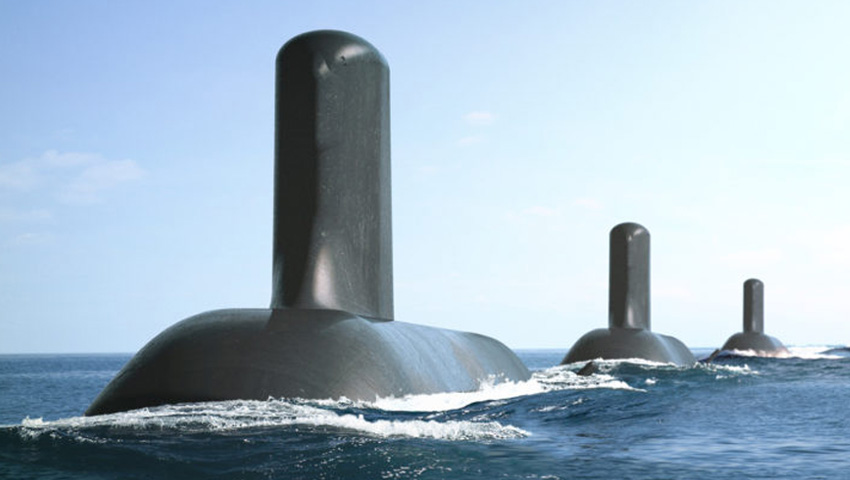A report commissioned by Submarines for Australia and conducted by Insight Economics, which called for both Defence and the government to consider a viable ‘plan B’ for the Attack Class program, was launched by Professor Hugh White at the National Press Club.
To continue reading the rest of this article, please log in.
Create free account to get unlimited news articles and more!
Gary Johnston of Submarines for Australia, who commissioned the report, said not only are we heading for an inevitable capability gap, but there was a "high risk" the project will fail.
The report, which was prepared by Insight Economics supported by an expert reference group that includes four retired admirals, says that the budget jumped by
60 per cent in two years and that already two project milestones have been missed.
As well, after initially promising 90 per cent local content, the French government owned company, Naval Group, has shown an "extremely low level of commitment" to Australian industry participation in the project.
Johnston said, "The government’s own advisory body, including three American admirals, even recommended the government should consider walking away from the project."
To get the project back on track with no further delays to the process, the report proposes a low-cost risk mitigation strategy – a ‘plan B’ – to inject competition into the process.
Under plan B, the government would commission Saab Kockums, designers of the Navy’s existing submarines, to develop a preliminary design study (PDS) for an
evolved version of the Collins Class submarine.
In 2022-23, both Naval Group and Saab would present a PDS for their respective designs together with a fixed price tender for building the first batch of three
submarines in Adelaide. The selection between the two designs would then be based on capability, delivery and local content, as well as price.
A second and more fundamental area of concern, however, is whether the submarines will even be fit for purpose in the 2030s and beyond. To address this, the review of submarine technologies flagged in the last Defence White Paper should be brought forward to the present.
Johnston said with China seeking to deny access to the South China Sea by investing heavily in advanced ships, aircraft and satellites, the finding in the report
that caused him the greatest worry is that by the 2030s our submarines’ effectiveness and survivability in a high intensity theatre will be threatened.
"If the government wants to continue deploying submarines to this theatre alongside the US Navy, the nation’s duty of care to the dedicated men and women of the ADF means we will need to begin the long and difficult process of acquiring nuclear-powered submarines," he said.
This sentiment was somewhat shared by the Submarine Institute of Australia, with executive director of the SIA, David Nicholls, stating, "The Submarine Institute of Australia has noted the release of the report Australia’s Future Submarine – Do we need a plan B?.
"The SIA’s core position is that during the transition from the Collins Class submarines to the Attack Class submarines, there must be no gap in Australia’s submarine capability and this will require a life-of-type extension to most, if not all, Collins Class submarines, which needs to commence soon.
"Any major change or disruption to the Attack Class submarines program heightens the risk of a gap in Australia’s sovereign submarine capability and could delay the program for many years.
"Only a few weeks ago, the Australian National Audit Office released an independent assessment of the program and it found that, by and large, it is progressing."
This was expanded on by Nicholls, who said, "The SIA continues to strongly support the construction of 12 new Attack Class submarines based on the rigorous design process which is currently underway and an effective construction program in Australia.
"Depending on all of the information it has in front of it – and much of this information is not in the public arena – an option for government could be to expedite the review based on strategic circumstances and developments in submarine technology, as flagged in the 2016 Defence White Paper, but this is, primarily, a decision for government."
The full Insights Economics report commissioned by Submarines for Australia is available here.
The Attack Class submarines will be delivered as part of the multibillion-dollar SEA 1000 Future Submarine program. Naval Group will be responsible for building 12 regionally-superior submarines for the Royal Australian Navy at a specialist submarine shipyard at Osborne, South Australia.
The Commonwealth government’s Australian Naval Infrastructure (ANI) program will support the development of the future submarine shipyards.
The Commonwealth government formally signed the strategic partnering agreement (SPA) with Naval Group in February 2019 ahead of confirming the final design specifications and requirements for the Attack Class submarines.
The Attack Class will enter service with the RAN at a time when 50 per cent of the world’s submarines will be operating in the Indo-Pacific region.

 Login
Login







